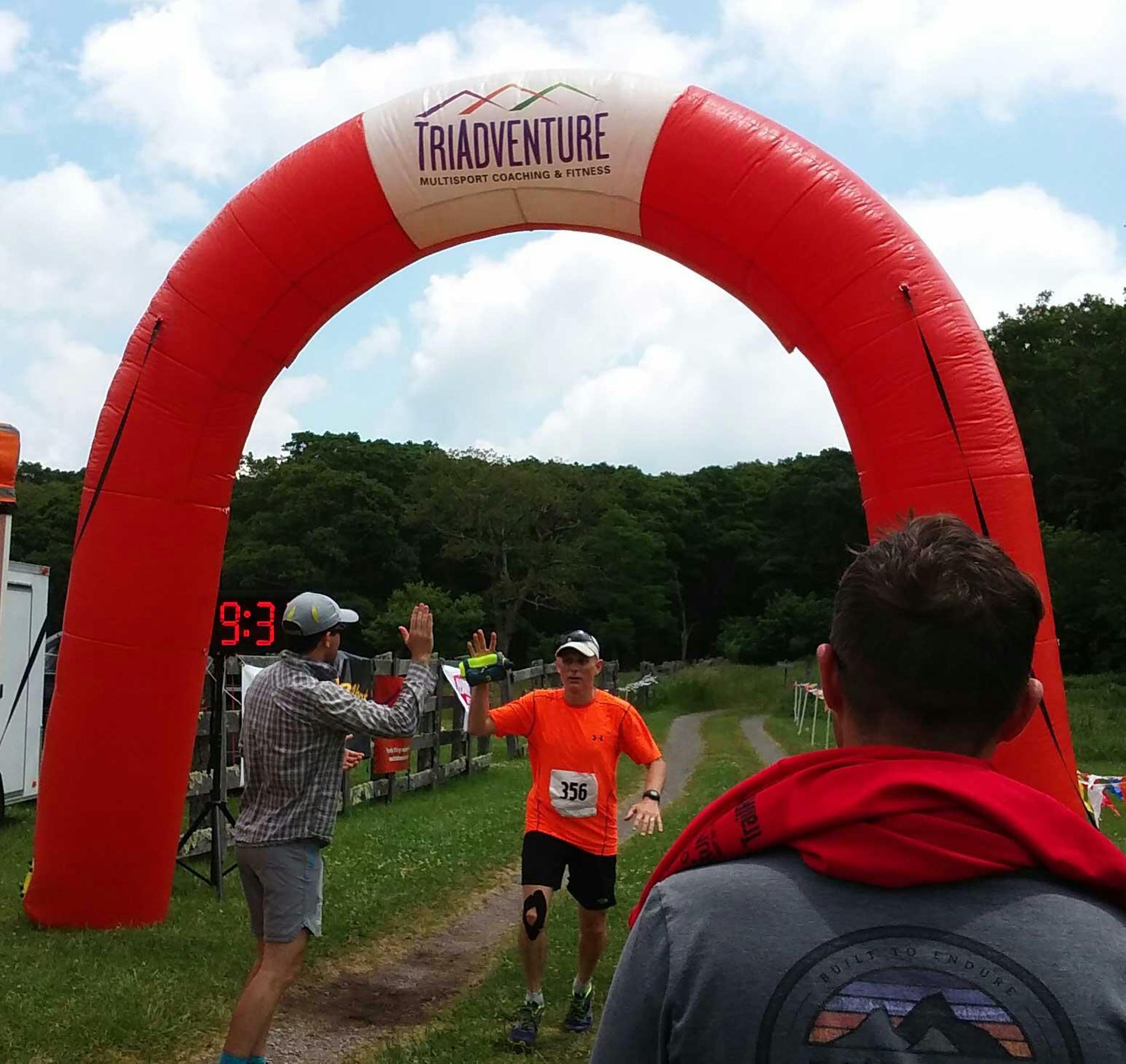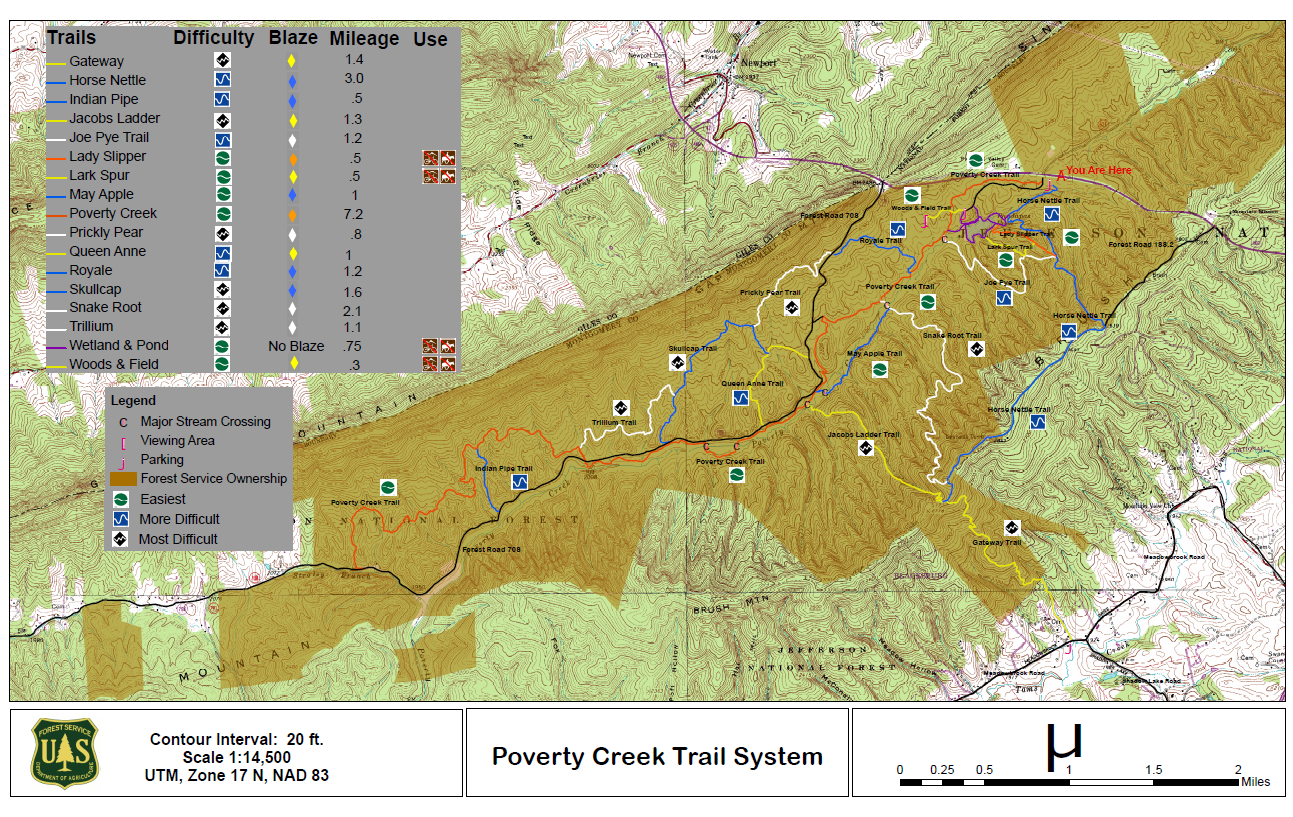 |
| 1993 S.F. Marathon, my 1st |
It was only 5 days
after my inquiry April 2 about serving as "pacer" for the
Blue Ridge Marathon that I received my confirmation for the April 22 race. I was to join a
team of runners with
Beast Pacing and pace the 4:15 pace. That is, I would run with
a small wooden stick and "4:15" on the end of it so that other
runners could follow me and finish the marathon in 4 hours and 15 minutes. Truth
be told, I was not 100% sure I could do it - I had only run the 10K there and
had not done a marathon for a long time. What was haunting me mostly, besides the
3 large, looming ascents up to Roanoke Mountain, Mill Mountain, & Peakwood
Dr to Stone Mountain, was the fact that I had "hit the wall" hard
during my previous 3 marathons. My first was a full-on, I-now-cannot-run,
tears-down-the-face, crying break down where I hobbled from about mile 24 to 26
with what felt like a sprint at the end at about a 12-minute per mile pace
during the 1993 San Francisco marathon. I again hit the wall again in
1994 during the Inaugural Walt Disney Marathon in Orlando - and once again
ten years ago during Marine Corps in Washington, D.C.
 |
| Eastern Divide Ultra 50K, 6/18/16 |
Then there was the Eastern Divide Ultra (EDU) 50K last year.
Not only did I hit several walls, but I literally stopped running at least 7
times. Let me spell that out: Of my almost 5 hours and 50 minutes of
running/hiking, I was not moving - usually just frozen in the middle of the
trail moaning in agony - for over 34 minutes while I waited for my legs to
start operating semi-normally. My
Strava data track had my slowest mile at
14:50 but looking more closely revealed 10 times where my pace was below 25
minutes per mile.

Jump forward to the night before
this year's Blue Ridge Marathon. As a pacer I had done some homework. I knew my
average had to be 9:44 per mile for the whole sha-bang. Not possible to maintain that up some of
those mountains. I found a neat little
doo-dad online (
FindMyMarathon.com) which allows you to create a wearable
band with mile splits based on a goal, AND it provides splits customized for
the course based on elevation. Golden! I
was getting there with my race band showing splits ranging from 8:20 to 13:28.
So the night before, seeking further inspiration, I had been following Trevor's
impressive April 17, 2017 Boston Marathon run and read
his insightful post-racereport.
He passed on a nugget.
I had heard, but my ego had ignored,
Trevor's thinking-aloud comment made back in June 2016 as I passed him going
up-hill during the EDU 50K at about mile 3: "Go right ahead ... " before the very
first aid station. STRIKE 1.
I heard him again at about mile 8 as
a group of us were flying downhill at a 6:20 pace when he announced, "The
Blacksburg blow-up is about to begin ..." Ignorance is bliss, or so my ego
tried to convince me. STRIKE 2. Ah the Oracle called Trevor.
"At mile 17, I started feeling low on energy, so I double
fisted a couple of gels Jordan Chang style to ensure I wouldn’t bonk."
Now
Trevor says the "wall" is "socially constructed...(and I)
just don't believe it exists" he posted. Ok I got it: a strategy for mile 17 to give my
body what it needs to run continuously.
I won't bore you with trying to
reconstruct the race mile by mile. Let's just say I learned a few things over
this last year, and from reading that post the night before Blue Ridge. Besides
the (now) obvious plan of laying out your race clothes (and dry after-race
clothes in a bag) and food ahead of time, I now have the ritual of making my
(1/2-sized) breakfast and coffee the night before to save time and reduce the
need for early morning-thinking. Gas up the car the day before too. And go pick
up your packet ahead of time and scout out a good parking spot the day before. Take
care of all the details, because something unexpected will always come up and
it is nice to have more capacity to take care of those.
5:00 am race-day. I am up and
getting ready: 1/2 breakfast and coffee: CHECK. Planned pit stop at the Ironto
Rest Area. CHECK. First unexpected hiccup.
"Traffic delay: left lane closed
ahead at Mile Marker 122" read the sign. I text the pacer organizer to let
her know of a possible delay. CHECK. I still arrive a few minutes before instructions,
with time to meet the other Beast Pacers for the marathon and half-marathon,
and to pose for a few group photos. 39 minutes to race start.
I drop off my drop-bag at the truck,
and then realize I left some of my food in my car. Oh well - make due. Caffeinated
shot blocks (my coffee substitute) in hand for breakfast #2 and a spare caffeinated
gel in my pocket for later. Twenty-one water/aid stations await. GU energy
Gels at mile 7, 16.8, & 22.8, supposedly. Ok, ready.

Running a 4:15 marathon for some is
a stretch. For others not so much. For me it was sort of an unknown.
Are you sure you
wouldn't rather do the 4:15? I have
that open as well." I wrote back, "Yea
either 4:15 or 4:30. Whichever you need - just not 3:15." Ok 4:15
it is.
My 3:21
ten years ago on a flatter course at Marine Corps (for which I had even hired a coach and 6 months
of marathon-specific training), plus ten more years of life put me in a reasonable range for pacing at 4:30 I
thought, so I asked for that slot. "
My "long-runs" had not been all that long as of late. 17 miles
on Dec 31. 23 miles on Jan 15. Hmm doubt was creeping in. But I had gotten in some
slow Saturday 14 milers and ramped up to 65 miles 2 weeks out, leading to my
taper week of under 20 miles with 2 easy, cross-training workouts early in the
week. Thursday and Friday were just short walks. I even drove to work instead
of bicycling to rest up. By Saturday morning my legs felt good. Even my ego was behaving.
Leading up to the race, I had also talked to a few running friends. One
experienced runner, Quinn Thomas suggested I "dial in" what a 9:44
pace feels like. On most of my runs, I
ran slow and got that down pretty well. As I got closer I shared my plans more
openly with a few others. 4:15 became more comfortable - more do-able in my
mind. That's over half the battle I think - believing fully you can do it. But
I still had "the wall" lurking - and the fear of disappointing others
who might be following my little orange "4:15" sign on a stick if I
fell back and did not hit my goal.
STRIKE 3 would have been not
listening to Trevor again. I didn't.
I finished my caffeinated Cliff shot
blocks before mile 2. I drank a few ounces at pretty much every one of the aid
stations; I took a calculated gamble, and after a little skepticism of trying the course drink
("Scratch"), I continued to go for it at each station with no stomach
issues. I took my
emergency stash-gel somewhere around mile 11. I even gulped down a mimosa at mile
13. I was moving along, mile-by-mile, just following my GPS and my mile-split
band.
At one point I passed another runner
stopped on the side in agony, trying to coax his calf into submission - cramping, no doubt. I could do nothing to help except to comment, "Just stay with
it; It'll pass." Kinda lame. As I
continued, I was thinking about the gels ahead, as advertised on the website. The next station had none. I grabbed a big handful of gummy bears since a volunteer
looked at me blankly when I repeatedly asked for a gel; I snarfed up an orange
slice. A bit later a bonus station had some chocolate candy something or other.
I devoured a mini Snickers at some point.
But Trevor's (Jordan's) "double
gel at mile 17" advice still awaited heeding. I resisted but secretly
I had decided miles before I was going do it. But at mile 16.8 where a tableful
of gels awaited, I grabbed not 2 but 3
gels, secretly rebelling again their sage advice.
Ok, Ok, 2 gels it is.
I finished them in about 45 seconds
and held onto the gel #3. I was getting tired, but feeling pretty good. My ego
was not enraged. A full 2 minutes later I fully rebelled against the advice of
my mentors: I took in the 3rd gel while
waiting for the cramps to start.
They didn't. Some soreness, yes, but
my pacing strategy had thus far worked and I only had a few sub-9 minute miles on
my legs, so I was doing pretty well. At the last food aid station at 22.8 I
grabbed more gummy bears (what are the white ones?) and yet another gel. Fuel.
From gel to gel, mile by mile, I following my plan. Pacing a race is usually something you hear about for part
of the race, such as in the middle or at the last part of a race to "bring
em home." I had paced Pawel Nazarewicz for 13 miles of his
80-miler at CrookedRoad in November 2016, but until a few weeks ago when I learned about Beast
Pacing, I didn't know there were pacers that ran entire races for others to
follow.
 |
| Beast Pacing, Blue Ridge Marathon, April 22, 2017, Roanoke, VA |
I'll do it again.

I'll pace with Beast Pacing again. I'll
listen again to my running friends, and consider their advice again.
There are always people around that have good advice. I'm learning to hear such
advice, consider it, and make it my own so it works for me. In this case, that
3rd gel at mile 17 was my version of the Trevor/Jordan advice, and it worked.
My goal for my finish was 4:14:52. With Beast Pacing instructions that
"acceptable pacing is coming within 1 minute of yo
ur assigned time," I
nailed it. My actual chip time was exactly that: 4:14:52 with clock time of 4:15:23.
2 (or 3) gels at mile 17. YES. Golden.
Thanks to everyone for their ideas, input, encouragement, and yes, advice.

































